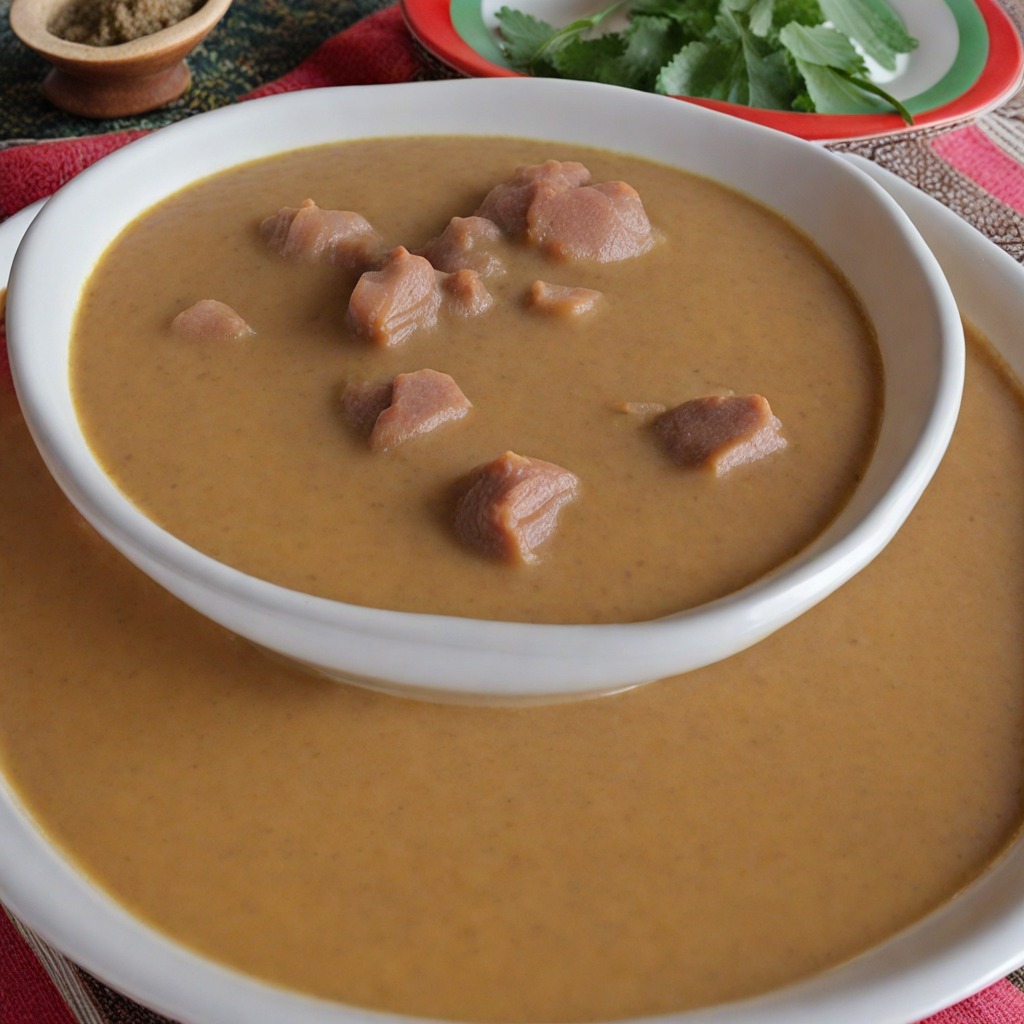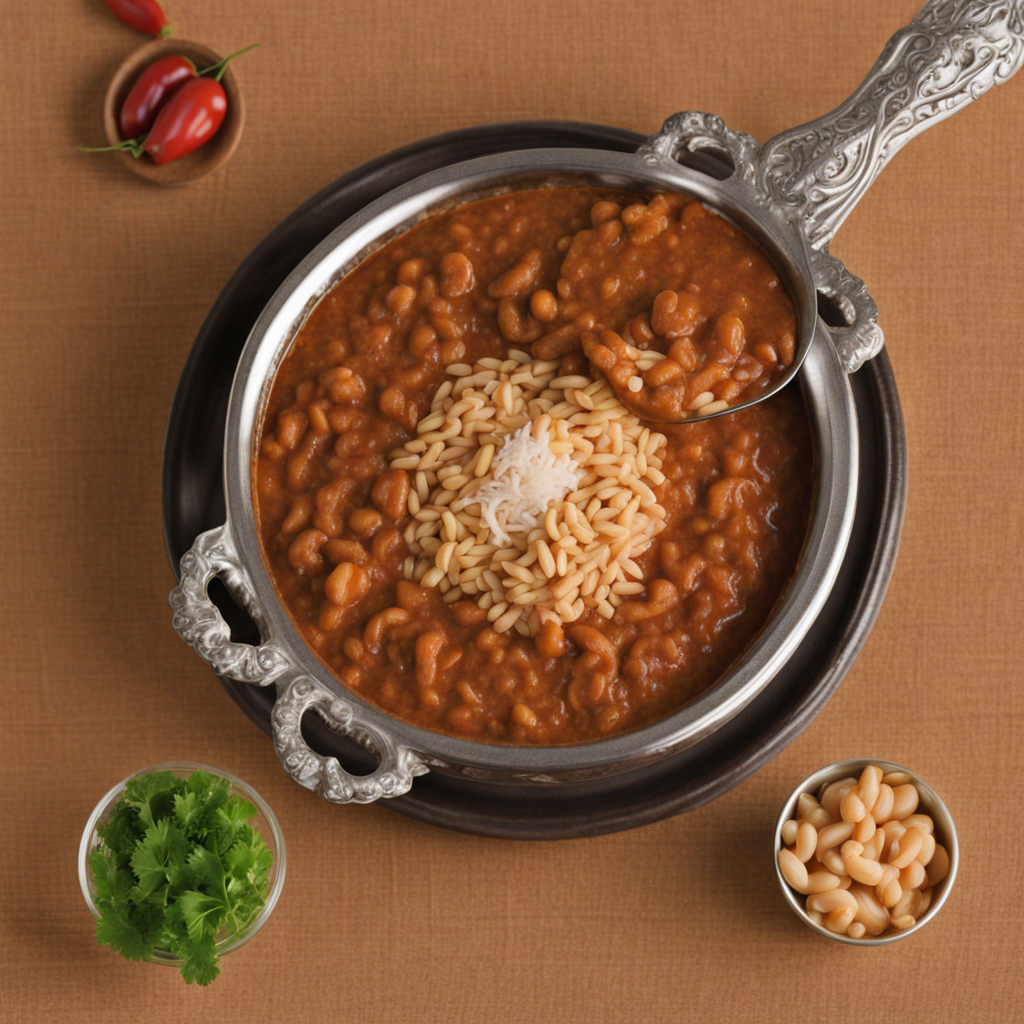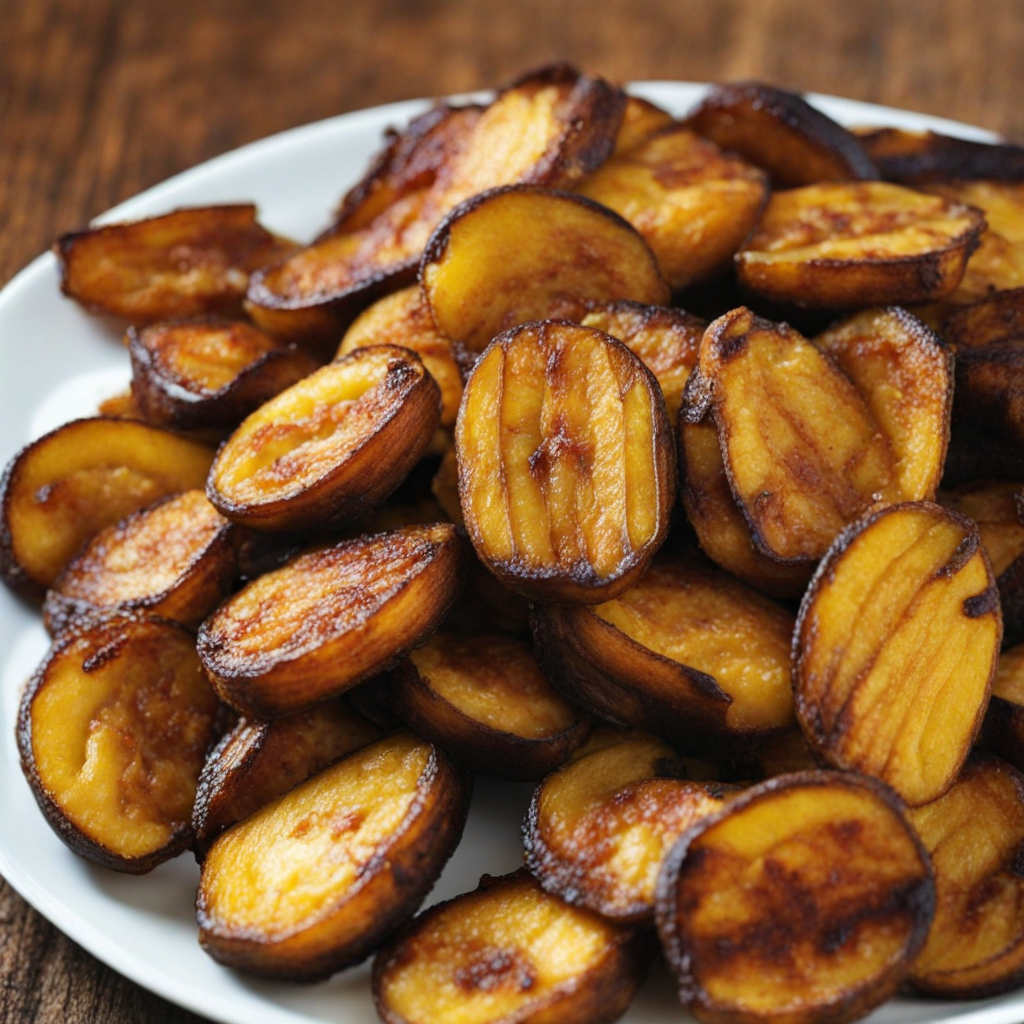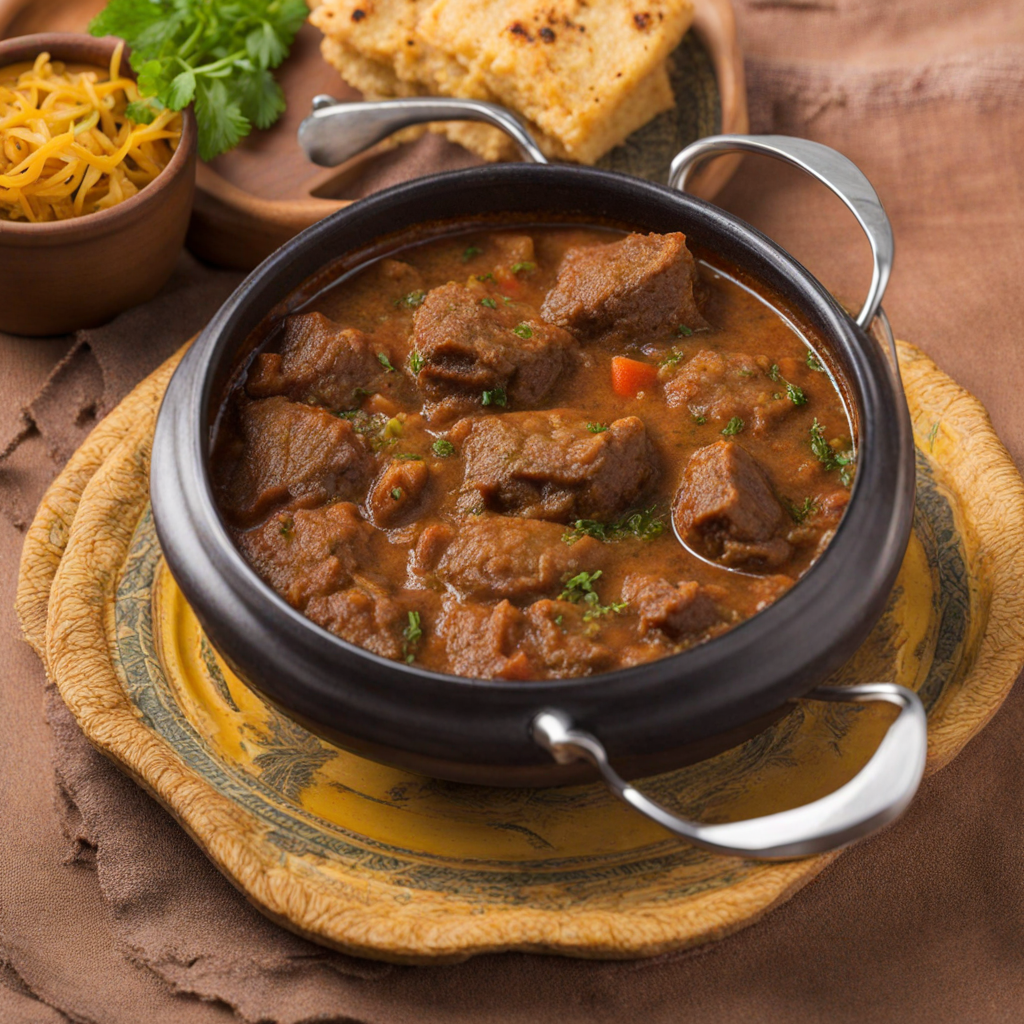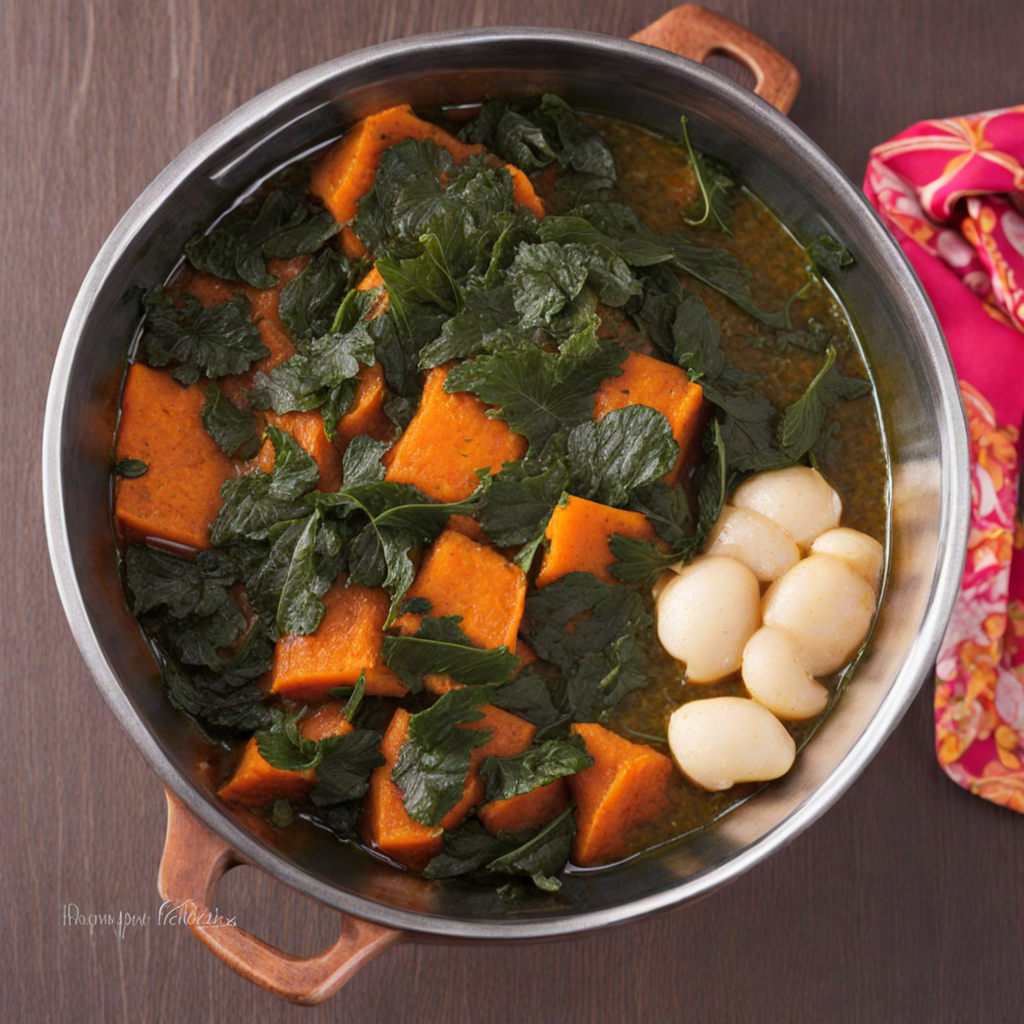Palm Butter Soup
Palm Butter Soup is a culinary gem hailing from Guinea, celebrated for its rich, velvety texture and deep, complex flavors. At the heart of this dish is palm oil, extracted from the fruit of the oil palm tree, which gives the soup its characteristic golden hue and distinctively nutty flavor. The soup typically features a base of finely ground nuts, often groundnut or cashew, which not only enhances its creaminess but also infuses it with a wholesome richness. Fresh vegetables such as okra, tomatoes, and spinach are often added, providing a beautiful contrast of colors and textures, as well as a burst of freshness that balances the earthy notes of the palm oil. The preparation of Palm Butter Soup is a communal activity, often bringing families and friends together to create this hearty dish. The process involves sautéing onions and garlic to build a flavorful foundation, followed by the inclusion of the ground nuts and palm oil. Meat or fish, such as chicken or smoked catfish, is often incorporated, simmering in the soup until tender and infused with the aromatic spices. This slow-cooking method allows the flavors to meld beautifully, creating a comforting dish that is both satisfying and deeply nourishing. Traditionally served with rice or fufu, Palm Butter Soup offers a delightful experience for those seeking to explore the flavors of West African cuisine. Each spoonful is a harmonious blend of savory, sweet, and slightly spicy notes, making it a perfect representation of Guinea’s culinary heritage. The dish is not just a meal; it's a celebration of community, culture, and the bountiful ingredients that the region has to offer, inviting adventurous eaters to savor a taste of Guinea's vibrant food scene.
How It Became This Dish
The History of Soupe de Beurre de Palme: A Culinary Treasure from Guinea Origins and Ingredients Soupe de Beurre de Palme, or Palm Butter Soup, is a traditional dish that originates from the West African nation of Guinea, a country rich in cultural diversity and culinary traditions. This dish is primarily made from palm oil, a staple ingredient in many West African cuisines, and is often combined with a variety of meats, fish, or vegetables, depending on local customs and personal preferences. The origins of palm oil can be traced back thousands of years to the oil palm tree, *Elaeis guineensis*, which is indigenous to West Africa. The extraction of oil from the fruit of the palm tree has been a practice of local communities for generations. This oil is not just a cooking fat; it also holds cultural significance and is often used in rituals and ceremonies. The importance of palm oil is evident in its presence in many West African dishes, including Soupe de Beurre de Palme. In terms of ingredients, the soup typically incorporates a base of palm oil, which is cooked down to release its rich flavors. The addition of onions, garlic, and spices contributes to the depth of the dish. Proteins such as chicken, fish, or goat are common, while vegetables like okra, spinach, or eggplant can also be added to enhance the nutritional value and flavor profile. The combination of these ingredients creates a dish that is not only hearty but also reflective of the region’s agricultural bounty. Cultural Significance Soupe de Beurre de Palme is more than just a meal; it embodies the social fabric of Guinea. In many cultures, food is a conduit for community and familial bonding, and this soup is often prepared for gatherings, celebrations, and communal feasts. It is a dish that brings people together, fostering a sense of unity and shared heritage. In Guinea, where communal eating is a significant aspect of social life, Soupe de Beurre de Palme serves as a centerpiece on many occasions. Moreover, the dish is often associated with hospitality. When guests arrive, it is customary to offer them traditional foods, and Soupe de Beurre de Palme is a favored choice due to its rich flavors and satisfying nature. This aspect of the dish highlights the cultural practice of sharing and generosity, integral to Guinean society. The soup also reflects the agricultural cycles of the region. As a dish that utilizes locally-sourced ingredients, it showcases the connection between food and the land. This relationship is vital in many African cultures, where the seasons dictate the types of ingredients available and the preparation methods used. Palm oil, in particular, has been a part of the Guinean diet for centuries, and its presence in this soup signifies the deep-rooted agricultural practices that have shaped the culinary landscape of the nation. Development Over Time The evolution of Soupe de Beurre de Palme can be understood through the lens of Guinea’s historical and socio-economic changes. Guinea gained independence from France in 1958, and since then, the nation has experienced various political and economic shifts. These changes have impacted local food practices, including the preparation and consumption of traditional dishes like palm butter soup. During the colonial period, the introduction of new ingredients and cooking methods influenced local cuisines. While traditional dishes remained integral to Guinean culture, the incorporation of foreign elements began to emerge. However, Soupe de Beurre de Palme largely retained its traditional roots, as it continued to be made with locally available ingredients. The dish became a symbol of resistance and cultural pride amidst the waves of colonial influence, as Guineans sought to preserve their culinary heritage. In recent decades, globalization has further shaped the food landscape in Guinea. As international influences permeate local markets, Guineans have begun to experiment with their traditional recipes, including Soupe de Beurre de Palme. While some might incorporate non-traditional ingredients or modern cooking techniques, the essence of the dish remains intact. This blending of old and new reflects a dynamic food culture that honors tradition while adapting to contemporary tastes. Moreover, the rise of the internet and social media has allowed for a resurgence of interest in traditional cuisines, including that of Guinea. Young chefs and home cooks alike are sharing their interpretations of Soupe de Beurre de Palme online, bringing attention to this beloved dish and making it accessible to a broader audience. This exposure has not only fostered a renewed appreciation for Guinean cuisine but has also encouraged culinary tourism, with food enthusiasts eager to experience authentic dishes when visiting the region. Conclusion Soupe de Beurre de Palme is a dish that encapsulates the rich history and cultural significance of Guinea. Its origins in the local agricultural practices, combined with its role in community bonding and hospitality, illustrate the profound connection between food and culture. As the dish has evolved over time, it has retained its traditional roots while also adapting to modern influences, making it a dynamic part of Guinea’s culinary landscape. Today, Soupe de Beurre de Palme stands as a testament to the resilience of Guinean culinary traditions. It continues to be a staple in households and celebrations, reflecting the country’s rich history and the enduring spirit of its people. As this dish garners more recognition on the global stage, it serves as an invitation for people everywhere to explore the flavors of Guinea and the stories that food can tell. Through Soupe de Beurre de Palme, one can appreciate not just the taste but also the cultural heritage that shapes it, making every bowl a journey into the heart of Guinea.
You may like
Discover local flavors from Guinea


